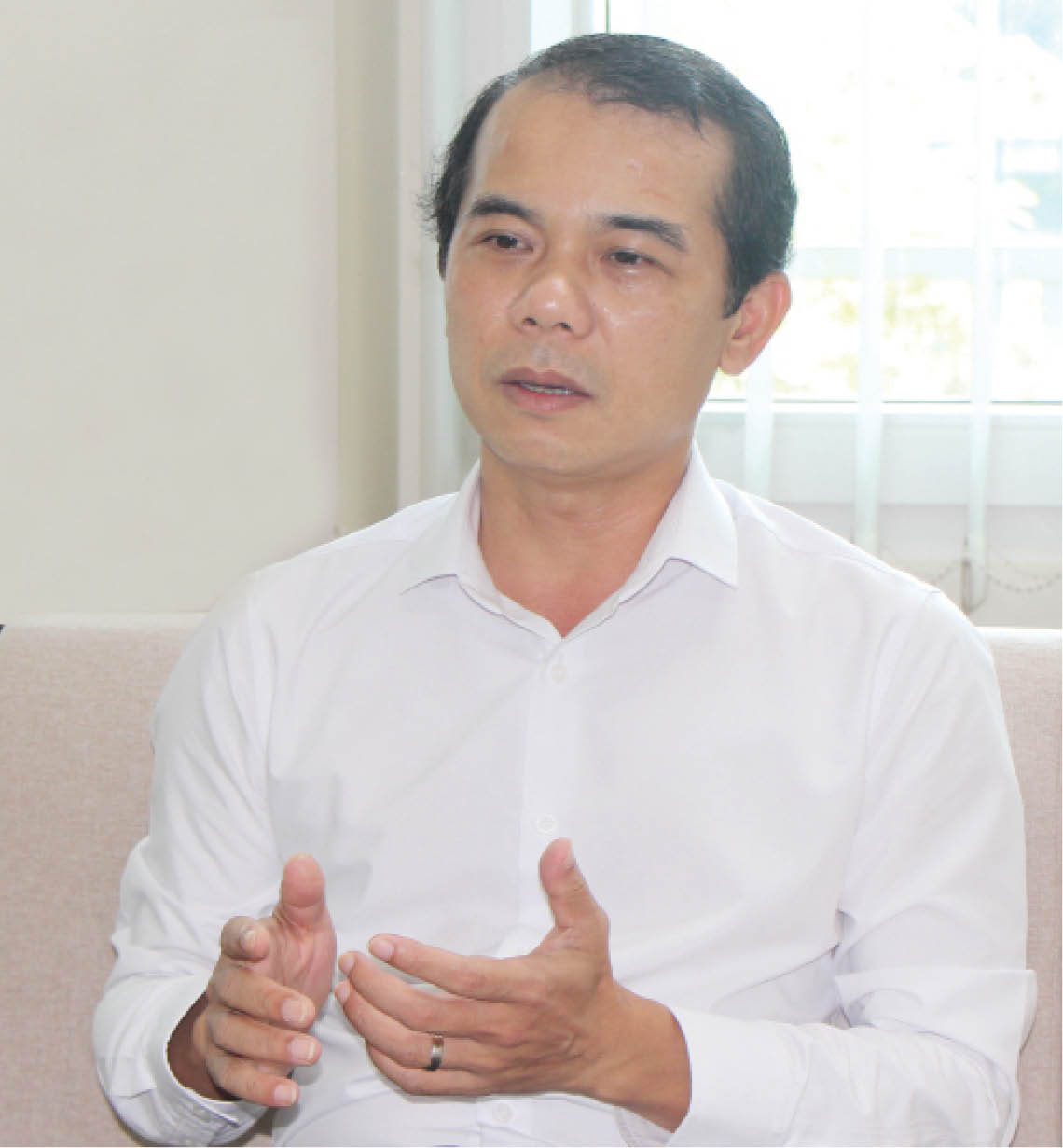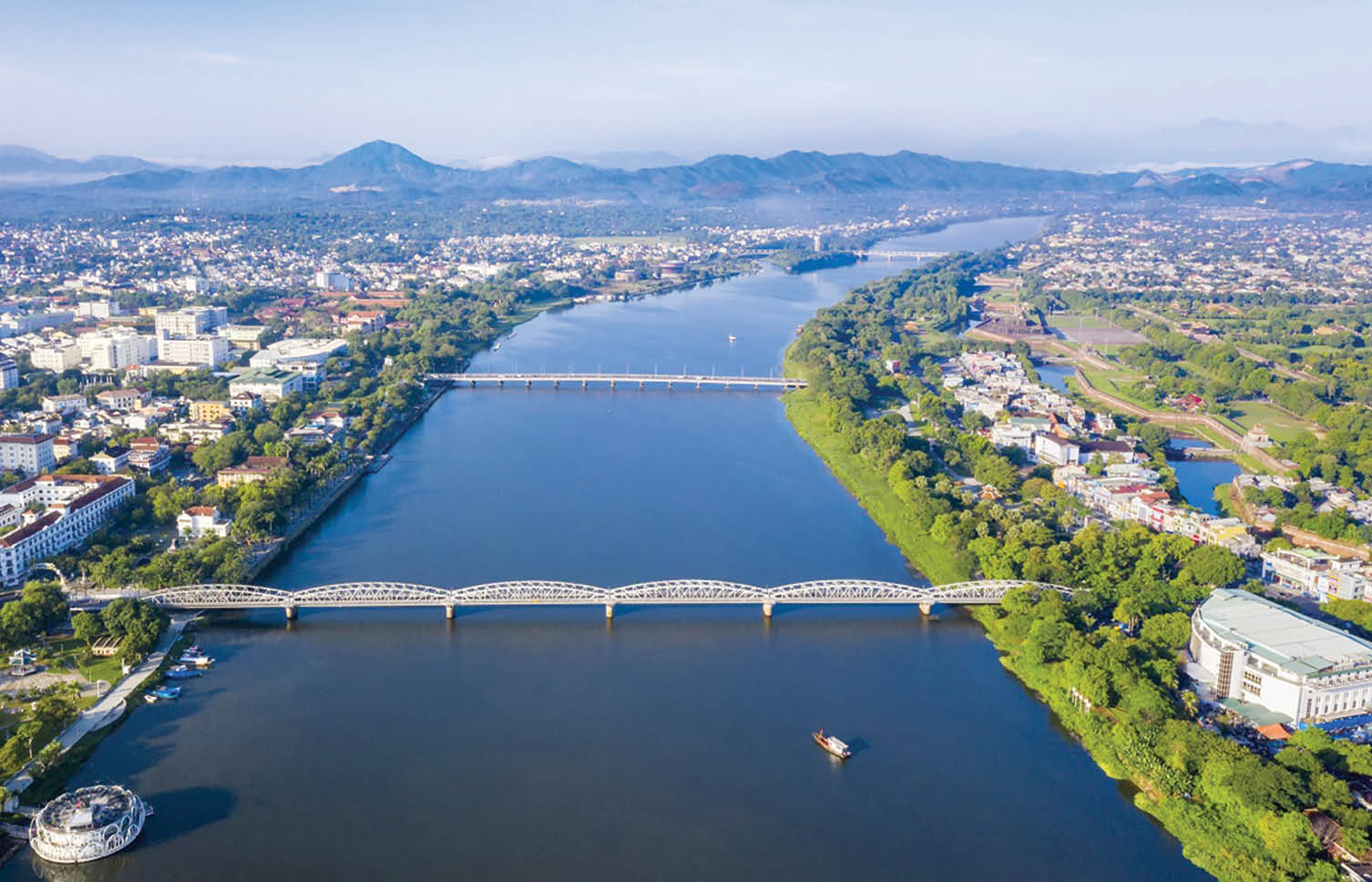
Mr. Vo Le Nhat, Deputy Secretary of the City Party Committee, Chairman of Hue City People's Committee. Photo: THAI HUNG
Looking back on one year of administrative boundary expansion, Hue City has undergone changes and developments in many spheres. Could you please talk about the initial changes?
The Resolution No. 1264/NQ-UBTVQH14 dated April 27, 2021 of the National Assembly Standing Committee, effective from July 1, 2021 is a historic milestone for Hue City in general and the newly-merged wards and communes in particular. Subsequent to one year of implementation, all the socio-economic spheres, investment and development, infrastructure connection, administrative apparatus perfection... have really undergone fundamental changes, creating a new appearance, new stature for the entire city.
The first and most obvious step is in infrastructure investment and urban connection, aside from the projects completed in the past year such as inter-communal traffic routes, drainage systems in the areas of Thuy Van, Phu Duong, Phu Mau, Thuan An..., electric lighting at the inter-ward routes, National Highway 49, road from Huu Trach Bridge to Gia Long Tomb...
A series of key projects and works in the province has been urgently researched and implemented such as Hanoi, Ba Trieu, Hai Ba Trung streets, and the route along the Perfume River. The infrastructure embellishment projects in Zone A, Zone B of An Van Duong urban area, the infrastructure investment projects in beach areas of Hai Duong, Thuan An, Ru Cha - Con Te contribute to building a dynamic, modern and harmoniously developmental city that earned the approval from the people of the city as well as the newly-merged wards and communes.
Could you please be more specific about these projects as well as the upcoming plans and orientations?
The city formulated the medium-term plan in 2021-2025 period approved by the City People’s Council in the Resolution No. 82/NQ-HDND dated December 22, 2021. In the process of formulating the medium-term public investment plan, the city examined the reality, reviewed the investment needs of the merged wards and communes, consulted, inherited and selected the medium-term public investment plans of the districts in order to arrange and prioritize the implementation of investment projects in accordance with the city characteristic and the approved plan.

A corner of Hue City
Worthy of note is that the city mobilized resources to implement many projects for transport infrastructure, electric lighting, school facilities... for 13 newly-merged communes and wards. 19 projects were carried out with a total investment of about 69.5 billion VND.
The city prioritized and expected resources in the medium-term public investment plan to continue investing in the projects in 13 wards and communes with a total investment of over 850 billion VND, which will be distributed according to the actual needs of the locality and the orientation of the city.
In order to create a synchronous connection in infrastructure between the old and new localities, what solutions will the city develop for the newly-merged 13 communes and wards, sir?
The city established the working groups to evaluate and orient investments on how to create a synchronous connection in infrastructure between the old city and newly- expanded localities. In the spirit, the public investment capital of the budget will be the “bait capital" to attract social capital, creating a driver behind development. The city especially did research into a proper, integrated, and harmonious urban model in order to develop urban area but not to massively urbanize and concretize rural areas, and simultaneously to avoid the negative impacts on the core area of the existing Hue heritage city.
In the long term, the city directs the relevant units to accelerate the zoning regarding the newly-merged areas for the orientation of socio-economic development. On that basis, it builds and supplements the projects in the city's medium-term public investment plan, projects calling for investment... to ensure the harmonious development between rural and urban areas, between conservation and development, towards a "heritage, culture, ecology, landscape, environment-friendly" city. It is the central driving force city; for "Hue to be always new", the administrative, intellectual and technological center of the province has a fundamental task of boosting the provincial economic development.
After the expansion, Hue City has enough sea, lagoon and mountain topography; would you please tell us the orientation and targets of the socio-economic development in time to come?
The city has been investing, encouraging and facilitating the development of quality tourism, services and trade, with the focus on tourism. Notably, it diversifies types of tourism products and services, develops the night economy, and exploits the potential of sea and lagoon tourism. Also, it implements the solutions to increase the value of products with advantage, gives attention to the fishery sector which is the strength of coastal communes and wards; conserves and promotes the traditional crafts and craft villages.
On the other hand, it encourages and supports enterprises in producing and developing key products with competitive advantages; develops and strengthen the promotion of OCOP brands and brand names, local key products and encourages the private sector to actively join in the strategy of industrialization and modernization.
After the administrative boundary expansion, the agricultural land area increases many fold vis-à-vis before, so the city focuses on developing agriculture and rural areas in the direction of sustainable agriculture, organic agriculture, and scientific and technological application to production. Simultaneously, the city develops the marine and lagoon economy grounded on green growth, conservation of biodiversity and ecosystems, protection of forest resources in association with the task of sovereignty protection.
Thank you, sir.
By THANH HUONG
